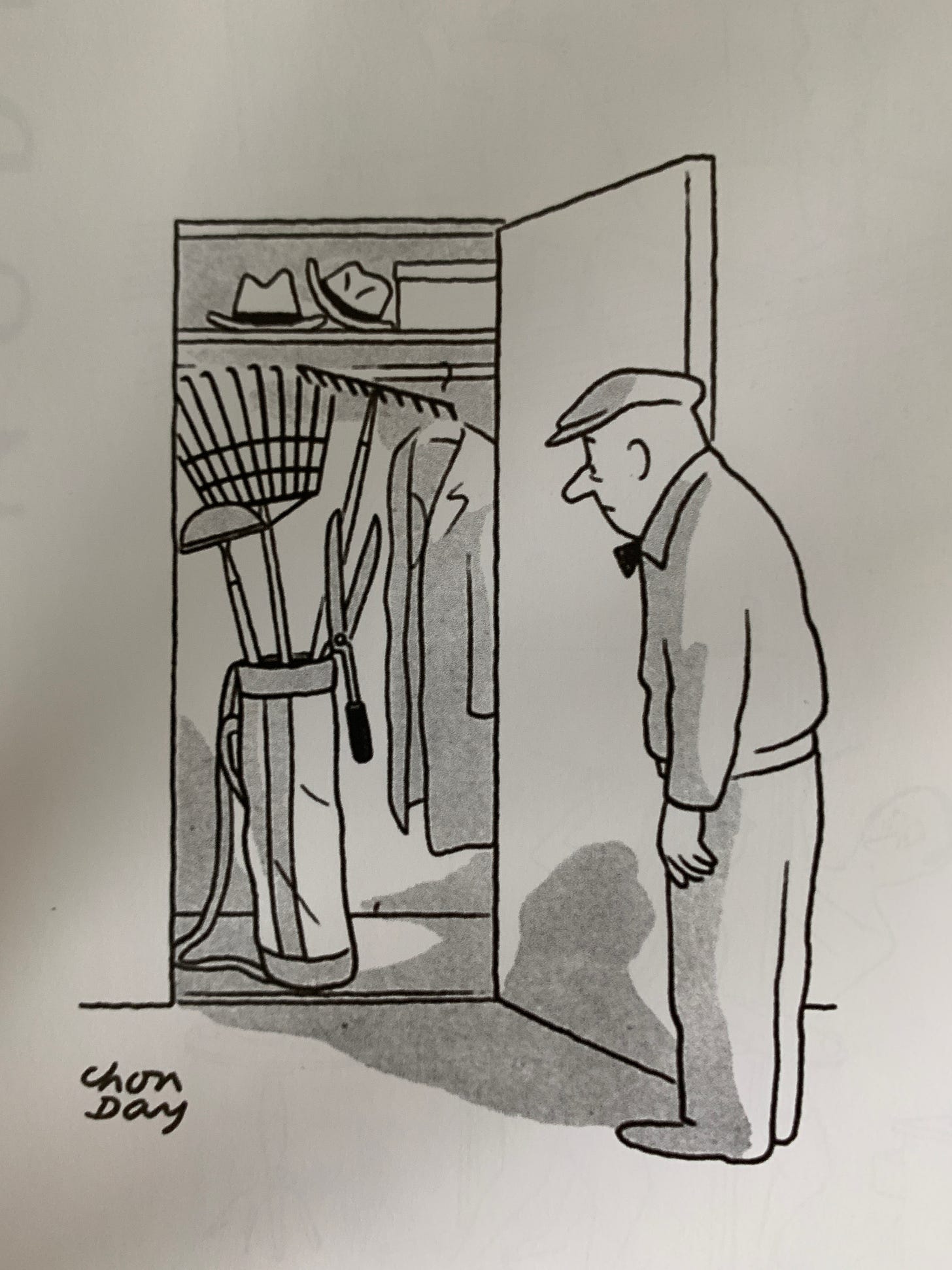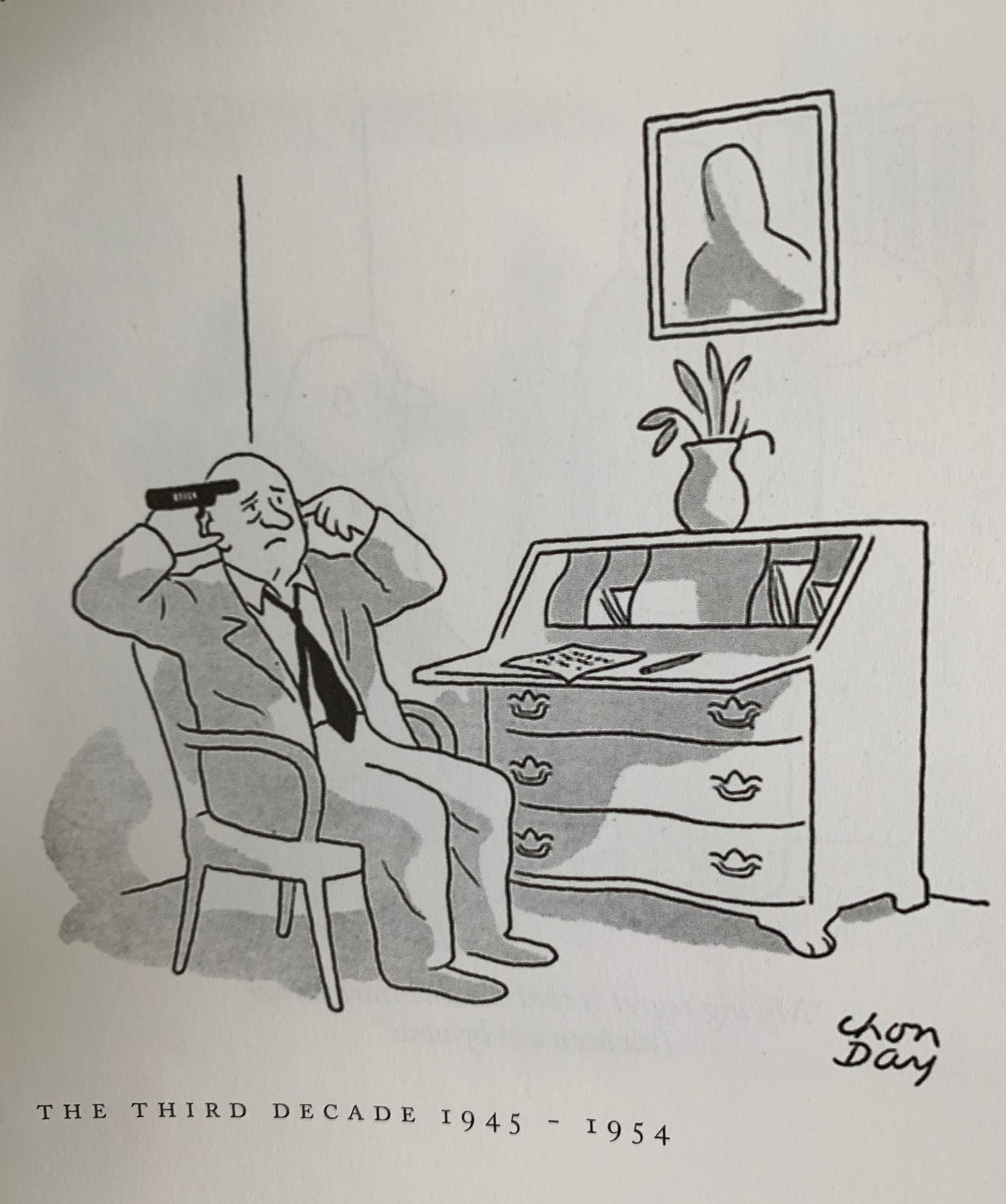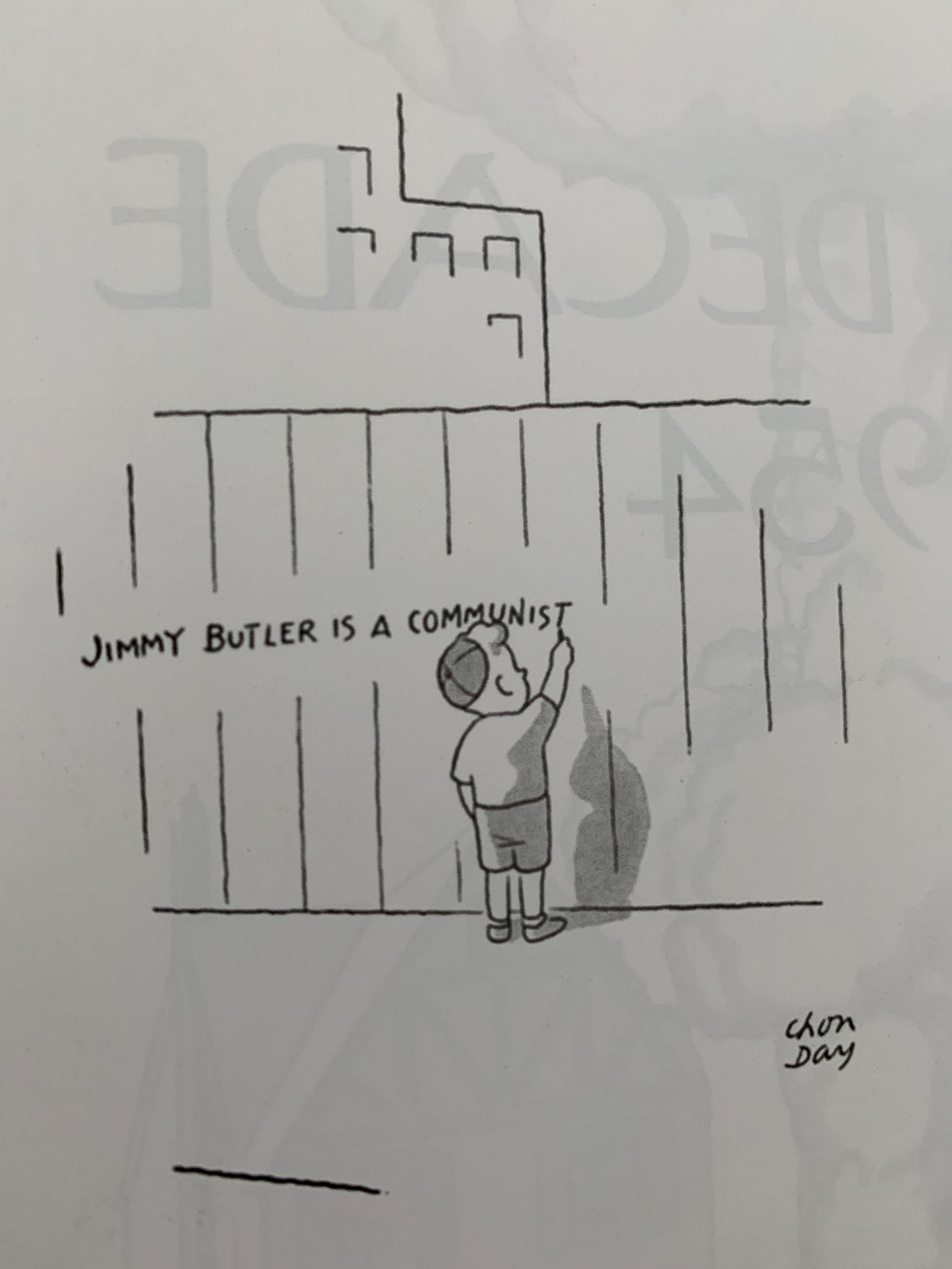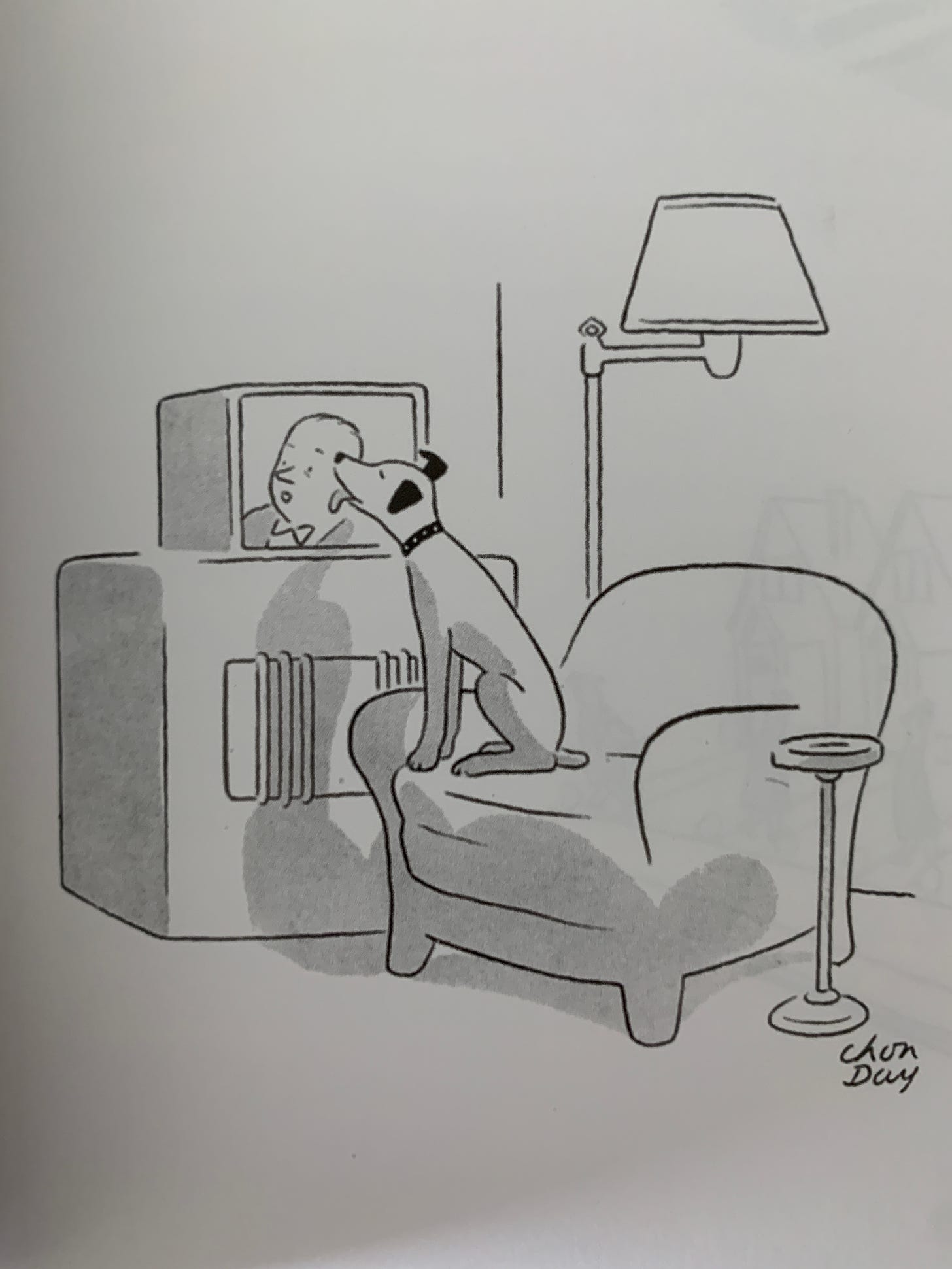The Art of Subtraction
Less is More: The Works of Chon Day
Over the holidays, I was gifted this collection of New Yorker cartoons. Most of the time it serves as coffee table decor, but every now and then it serves as a vast well of inspiration. I find myself reaching for this when I’m feeling absolutely tapped out of ideas, a rather frequent occurrence.

Flipping through old cartoons, you get a real sense of history and tradition for what can, at times, seem like a trivial medium. While the cultural references may look different, on the whole, we’re still drawing about the same things. Cartoons from the mid-twentieth century could be dropped right into the magazine today and you wouldn’t bat an eye.

One of the purest joys in this process is discovering new (old?) artists and falling in love with their work. For me, that artist is Chon Day. Day’s cartoons ran in The New Yorker from 1931 to 1998. His cartoons are understated and contain a sort of everyday melancholy, neatly packaged in minimal line-work and an unvarying ink wash. The captions are never wordy and seldom needed.

The result is that punchlines are delivered free of any distractions to the reader—they can focus solely on the emotion and the humor. With a few pen and brush strokes, Day could communicate a quiet rage or an all-too-recognizable sadness. It takes a master of their craft to say everything without saying anything at all.

Perhaps, the reason I connect with his work is because, to me, it embodies an approach to cartooning, a thesis I’ve had for a while, which is that cartooning is a form of visual abbreviation. The goal should be to reduce things to their essence rather than capture them as is. In other words, what is the least amount of lines I can use to represent an object that you’ll recognize?

Elizabeth McNair is a modern New Yorker cartoonist that comes to mind. It’s a conscious rejection of the loud, chaotic cartoons that most people think of when they hear the word.
There’s a particular style of cartoon I despise, usually political in nature, that favors caricature and labels every bit of the joke because the artist thinks so little of the reader. You know the type; where Republicans are elephants, Democrats are donkeys, and there’s a sinking boat that’s supposed to represent the US or the economy or whatever. I’d rather claw my eyes out…but I digress.

Part of the draw may be that it requires less technical skill to accomplish for an untrained artist like myself. However, when you commit to using fewer lines, the ones you do use become all the more important. I’m still trying to figure out the calculus of which shadows to ink and what folds in a piece of clothing are important. It’s a delicate balance that’s easier said than done.

Bear in mind, these are just my opinions. There were (and are) plenty of brilliant cartoonists that err closer to realism. This is just one artist and style I’ve grown to appreciate. Consciously and unconsciously, I’m picking up bits and pieces that inevitably get incorporated into my own work as a function of convenience. Ultimately, my “style” is just an amalgamation of shorthands I’ve accumulated over the years. Consider this entry a mission statement for the kind of work and tone I hope to accomplish with them someday.

[Chon Day’s New Yorker cartoons can be found and purchased online in the Condé Nast store.]
Pocket Change
Breonna Taylor’s name seems to have gotten lost in the deluge of headlines recently. She was shot in her home by police executing a no-knock warrant, looking for two people that were already in police custody. No-knock warrants are now banned in Louisville with a law named after Breonna, but there have been no charges brought against the officers that shot her. Here is a list of ten actionable items you can do to help demand justice for Breonna Taylor.
Cheers,
Evan



